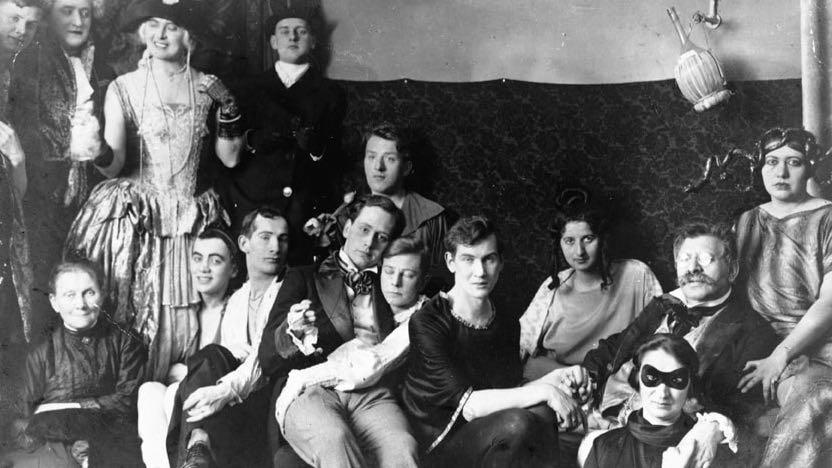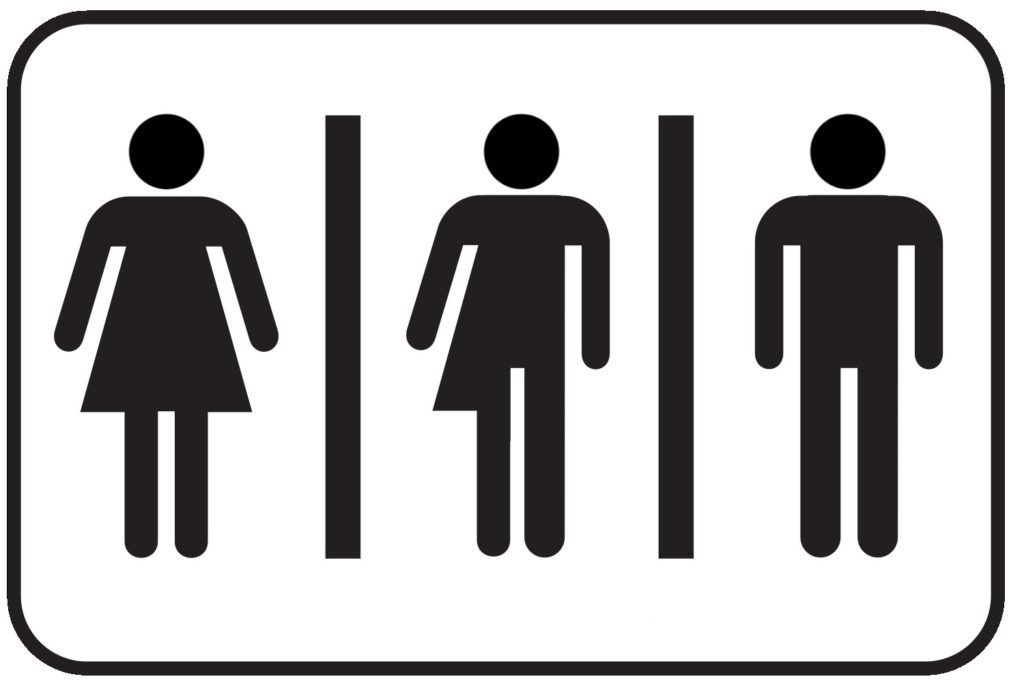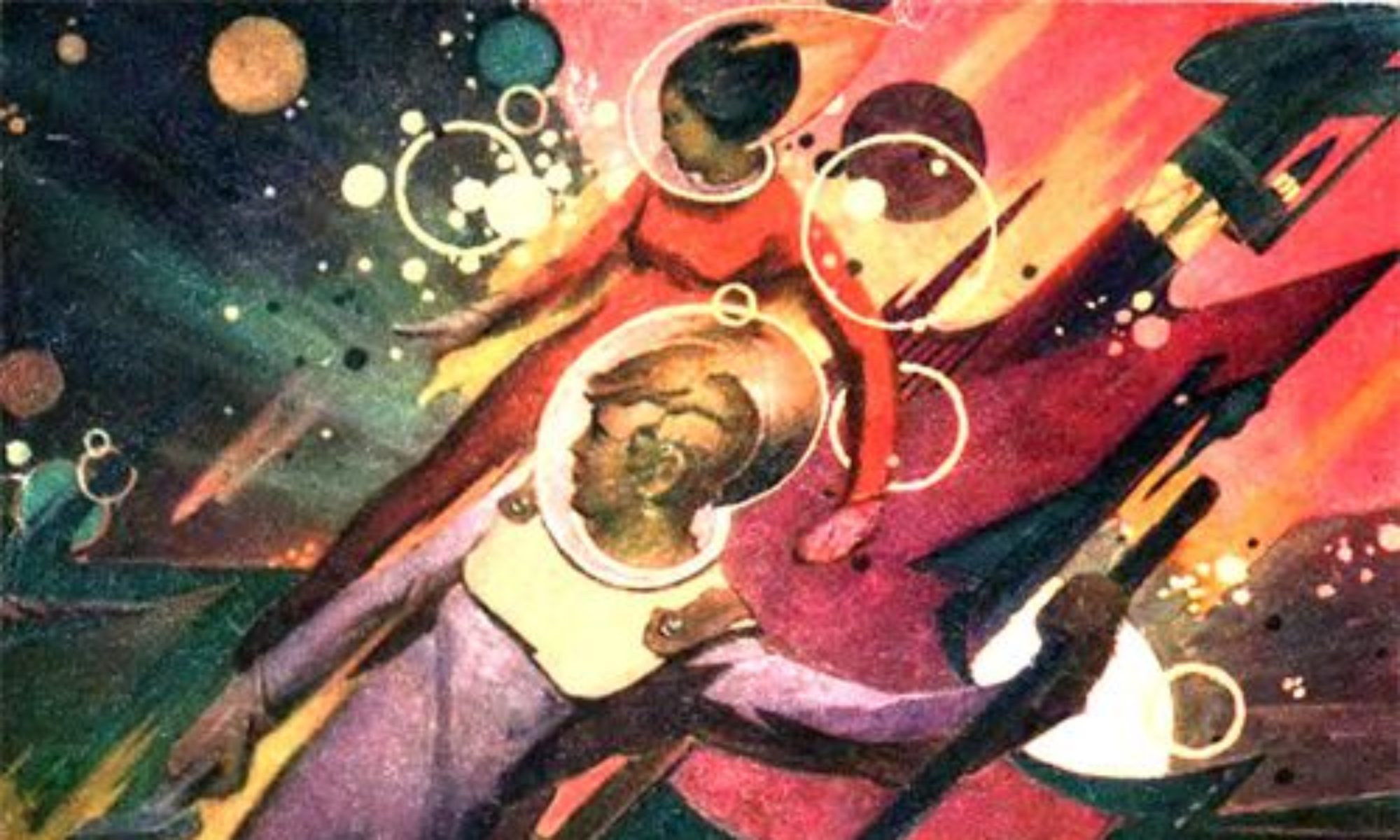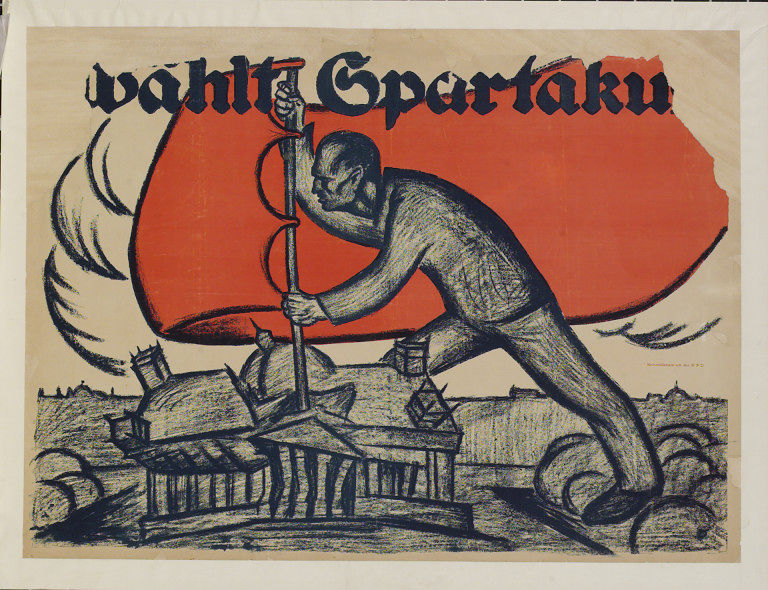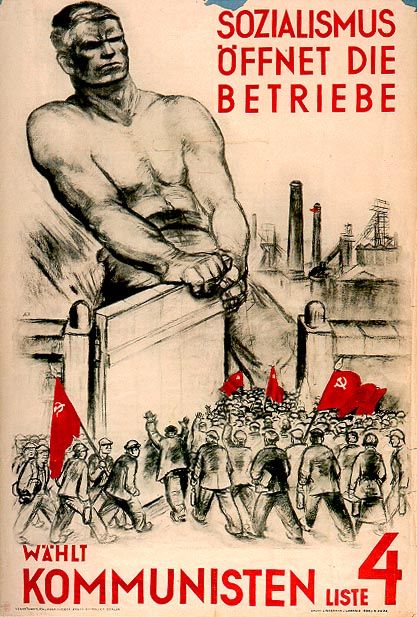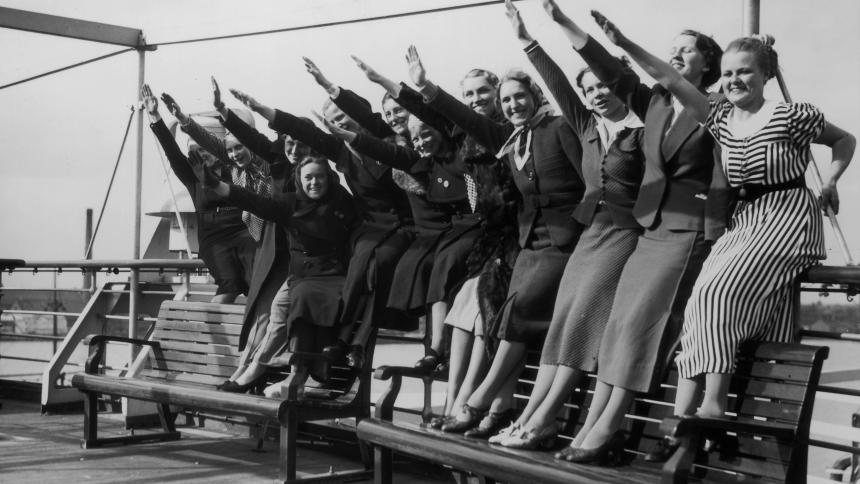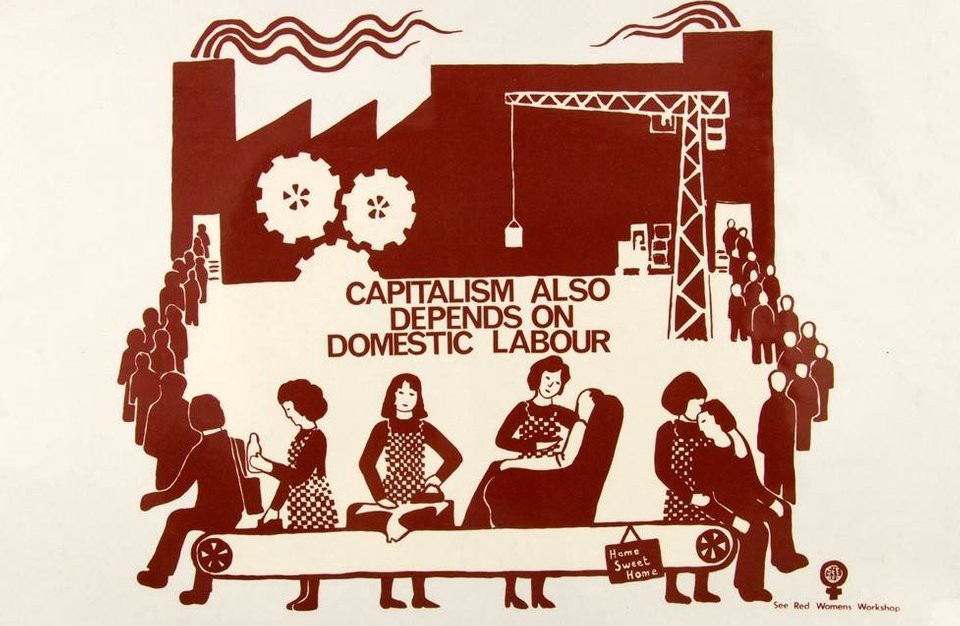Historically, the relationship between feminism and Marxism has frequently been characterized by tension. While Marxism has sketched out a profound vision of human liberation, feminists have often been skeptical of this vision’s inattentiveness to gendered oppression. Likewise, Marxists have often feared that an overemphasis on gender would distract from the primacy of class contradiction at the core of class struggle. Despite these concerns, there is also an important history of Marxists and feminists working together to better understand the relationship between class society, gendered violence, and oppression. At stake in such cooperative efforts are crucial questions as to precisely how gender operates and is constituted.
I come at this question from the perspective of a partisan. That is to say, that I start from the perspective of a Marxist Leninist as well as a Materialist Feminist. I have worked for some time now to try to interject into the uneasy relationship between these two schools of thought, in order to argue that their goals are necessarily intertwined.
So for the sake of transparency, I’ll put my cards on the table up front. My position is that the contemporary western system of gender operates as a class. By that, I mean that the social positions of man and woman are class positions that represent one’s relationship to a specific division of labor. Man and woman are both expressions of a contradiction within class society; this means that women’s liberation has to be achieved through the dialectical resolution of this contradiction. Such a resolution can only be achieved by organizing women as a class for the revolutionary overthrow of the material base that produces the class contradiction of gender. Practically, this means the destruction of the nuclear family model, the abolition of the gendered division of domestic labor, and continued ideological critique and struggle against the gendered ideologies which these social conditions produce.
Understandably, many Marxists would read this account and question its utility for Marxist theories of class struggle. If women constitute a potentially revolutionary class, then would bourgeois women not be conceived as part of a progressive class in its fight against proletarian men? If gender operates as a class, then does that mean it has equal footing with class struggle against capitalism? What does this mean for our organizational models, and does this complicate things in a way that would hinder effective mass struggle against capitalism? What about the fact that many of the materialist feminists who make this argument also reject aspects of Marxism? These questions are all fair, and if the account I am trying to forward of gender were to stop at the sketch outlined above, they would possibly be very good reasons to reject this theory of gender.
The problem is, I am not only a Materialist Feminist, but I am also a Marxist Leninist. The theory of gender I want to forward is a bit more complicated than I have hinted at above. While I think gender functions as a class contradiction (in the formal materialist sense) it is still necessary to ask how that contradiction has historically developed. Here I turn to the work of Silvia Federici, whose work on gender has sought to tie the development of this contradiction to capitalist primitive accumulation and the historical emergence of the class struggle between the proletariat and capitalist classes. I argue that Federici’s account can bridge the gap between Materialist Feminism and Marxism by showing how the man/woman contradiction arises as a result of an emerging proletariat/capitalist contradiction. The material conditions which produce the modern western gender system are themselves a result of capitalist development. As such, the resolution of the class struggle between men and women cannot be achieved without the resolution of the class struggle between proletariat and capitalist. The gender contradiction cannot be reduced to the capitalist class contradiction, but it also cannot be resolved without the resolution of the capitalist class contradiction. As such, the overthrow of capitalism is a necessary (but not sufficient) condition for the abolition of gender and the liberation of women as a class. If this account is correct, then the Materialist Feminist strategy of women’s liberation suddenly becomes inherently intertwined with the Marxist strategy of proletarian revolution.
I believe that this account can address many of the concerns that Marxist critics have had with the materialist feminist tradition. If the resolution of the male/female contradiction is contingent on proletarian revolution, then, of course, we would not conceptualize bourgeois women as our allies while seeing proletarian men as our enemies. Instead, we would have to understand the struggle for women’s liberation as inherently intertwined with the overthrow of the capitalist class. At the same time, we have to struggle for women’s liberation within socialist society as well as within mass struggles. We have to focus on the ways that there is a contradiction between proletarian men and proletarian women, and we must focus on resolving that contradiction through destroying the gendered division of labor within socialist society. This is not only crucial for the successful liberation of women as a class, but is also necessary in order to destroy the ideological justifications for the nuclear family, which themselves function as part of the capitalist ideological superstructure. In this account, the struggle for proletarian revolution and women’s liberation require careful attention to both respective contradictions, but primacy is still given to the resolution of the capitalist class contradiction.
Women As A Class:
In order to reconcile the Materialist Feminist account of gender with a Marxist theory of proletarian revolution, we must first understand the way that Materialist Feminism theorizes gender. As always, I turn to the work of Monique Wittig in order to succinctly capture the nuances of this theoretical approach.
In her essay One Is Not Born A Woman, Wittig attempts to provide a materialist account of gender. It is important to recognize that this account comes into conflict with Marxist theory, inasmuch as Wittig herself contrasts this theory with Marxism. As such, any attempt to theorize Wittig from a Marxist perspective must work to bridge the gap created by Wittig’s own distancing from Marxism. Wittig opens her essay with a bold claim:
A materialist feminist approach to women’s oppression destroys the idea that women are a “natural group” : “a racial group of a special kind, a group perceived as natural, a group of men considered as materially specific in their bodies.”
What Wittig attempts to do here is to establish that a Materialist theory of gender necessarily requires a non-essential definition of womanhood. It is not enough to take the category of woman for granted; instead, we must interrogate how womanhood is constructed. Wittig not only wants to uncover the social constitution of womanhood, but is also highly interested in the ways that the idea of women as a natural group function as an ideological justification for the oppression of women.
Wittig argues that the idea that there is a natural grouping of humans that we can label “women” is, in fact, a means of naturalizing and mystifying an exploitative social relation. She writes, “A materialist feminist approach shows that what we take for the cause or origin of oppression is in fact only the mark imposed by the oppressor: the ‘myth of woman.’” Wittig rejects the idea that womanhood is a matter of simple bodily materiality, instead arguing that the idea of a natural group of women on the basis of embodiment is a result of social oppression. She continues:
[W]hat we believe to be a physical and direct perception is only a sophisticated and mythic construction, an ‘imaginary formation,’ which reinterprets physical features (in themselves as neutral as any others but marked by the social system) through the network of relationships in which they are perceived.
The sense in which most people take gender for granted on the basis of embodiment is thus understood as an ideological function of gender which obscures and reinforces the material conditions of women’s oppression.
Wittig puts this in much more explicit terms in her essay The Category of Sex. In this essay, Wittig begins to refer to this belief in a natural grouping as the ideology of sexual difference. This ideology operates precisely to justify the exploitation of women. This justification is likened to a form of censorship. Wittig writes:
the ideology of sexual difference functions as censorship in our culture by masking, on the ground of nature, the social opposition between men and women. Masculine/feminine, male/female are the categories which serve to conceal the fact that social differences always belong to an economic, political, ideological order. Every system of domination establishes divisions at the material and economic level. Furthermore, the divisions are abstracted and turned into concepts by the masters… for there is no sex. There is but sex that is oppressed and sex that oppresses. It is the oppression that creates sex and not the contrary
Something remarkable occurs here. By transforming sex from a natural grouping into a relationship to the systemic oppression of women, Wittig functionally articulates gender as a class. The ideology of sexual difference is a superstructural ideology which is produced by a material base. This ideology not only emerges from the material conditions of women’s oppression, but acts to obscure it, to censor those who would demystify it, and to justify it. After all, if gender were a natural grouping, there would be a foundational and immutable basis for women’s oppression. What Wittig seeks to do is demonstrate that there is no natural basis for this oppression. Instead, Wittig suggests that there is a functional class struggle between men and women and that this struggle emerges from a specific form of economic exploitation of women by men. She summarizes this quite succinctly by writing, “the perenniality of the sexes and the perenniality of slaves and masters proceed from the same belief, and, as there are no slaves without masters, there are no women without men.”
After interrogating the material underpinnings of gender, we might ask: what is a woman? The answer that Wittig provides us with is striking: a woman is a member of the class of women, which is the class that is oppressed and exploited by the class of men. This is a non-essentialist theory that removes any natural underpinnings for women’s oppression. No appeal can be made to women’s natural subservience or biological inferiority. Instead, we are left with the brutal fact that gender itself is a class relationship.
While Wittig demonstrates that the relationship between men and women is formally articulated as a class relationship, she has so far stopped just short of providing a materialist explanation of the economic base which produces this class relationship. In order to explain this, Wittig begins to develop heterosexuality as a material base for gender. The heterosexual pairing of man and wife exists as a principle of social organization for the subjugation of women. While the realities of marriage continue to evolve, it historically functions to reduce a woman to a man’s property, to force women to undertake specific uncompensated forms of domestic labor, and to make women sexually available to men through a formalized contractual framework. As such, there is a division of labor which underlies gender. Additionally, gender has functioned to create a different relationship to property, as married women have historically been deprived property ownership in lieu of the right of a husband to control familial finances. It is precisely this economic relationship which the ideology of sexual difference emerges from, is meant to reinforce, and obscures.
For Wittig, the goal of women’s liberation is achieved through the abolition of gender. Such an abolition results from resolving the dialectical contradiction between men and women as classes. As such, it must be achieved through class struggle. Wittig explains, “Our fight aims to suppress men as a class, not through a genocidal, but a political struggle. Once the class ‘men’ disappears, ‘women’ as a class will disappear as well…” Women’s liberation requires the abolition of the conditions which produce womanhood in the first place. We might think of the sense in which the liberation of the proletariat over the capitalist class abolishes the class position of the proletariat, by destroying the capitalist base which produces the class contradiction between proletariat and capitalist in the first place. Women’s liberation requires women to organize as a class for the abolition of the class of woman.
While Wittig gives an astoundingly complex account of the material foundations of gender, there are some theoretical issues here that must be taken up.
Frankly, Wittig fails to properly historicize the emergence of heterosexuality or the modern marriage contract. Her work largely takes it for granted while failing to note that the specific articulation of heterosexuality she examines is a western phenomenon which emerges specifically out of the material conditions of Europe. In fact, Wittig hardly considers that the system of gender she analyses might not be universalized on a global scale. The European gender system is taken to represent gender in and of itself, without any justification for this. As such, there is a certain eurocentrism which exists within Wittig’s work that goes largely uninterrogated. This does not constitute sufficient grounds for discarding Wittig’s theory, but it does require a properly materialist appropriation of her work to historicize it and explain the relationship between the European gender system and the capitalist process of colonization.
Furthermore, Wittig tends to treat heterosexuality as a somewhat abstract phenomenon without giving a close account of how heterosexuality is maintained and perpetuated through the social unit of the family. It is clear that for Wittig, marriage and the family are the sites where heterosexuality is enacted and reproduced, but it is not clear where the family emerges from in Wittig’s critique. What social forces cause the family to become a fundamental social unit within capitalist society? Unless this question can be answered, we are forced to understand heterosexuality and the nuclear family as transhistorical realities. This is not a tenable option, however, as anthropological and historical research (dating as far back as Engel’s Origins of The Family) have consistently demonstrated that the modern nuclear family and the heterosexual economic arrangement that it is founded upon are historically contingent phenomena. As such, we are left without an explanation of where the class contradiction between men and women comes from.
This failure to historicize this racialized and westernized system of gender along with the failure to thoroughly historicize the emergence of the nuclear family leaves us with an account which falls short of a thorough materialist theory of gender. Despite these shortcomings, Wittig certainly makes leaps and bounds in feminist theory by rejecting both liberal and radical feminist theories that take the category of woman for granted. Furthermore, Wittig allows us to understand gender as a dialectical contradiction. Man and woman are transformed into class positions, and women’s liberation is articulated as a matter of class struggle. All of this is theoretically important and significant, but must be augmented with a properly historical account of the emergence of this system of gender within the development of capitalism. For that, we must turn to another theorist.
Gender And Primitive Accumulation:
In order to properly contextualize Wittig’s theory of gender, I will turn to the work of Italian feminist Silvia Federici’s account of primitive accumulation. In her groundbreaking text Caliban and the Witch, Federici complicates Marx’s theory of primitive accumulation by focusing on the ways that primitive accumulation “was also an accumulation of differences and divisions within the working class, whereby hierarchies built upon gender, as well as ‘race’ and age, became constitutive of class rule and the formation of the modern proletariat.” This emphasis on the accumulation of differences is of the utmost importance for a materialist theory of gender, because it can historicize the ideology of sexual difference that Wittig highlights as a central justification for women’s oppression.
The Marxist theory of primitive accumulation is one of the most important insights of Marxist theory because it demystifies the emergence of capitalism. Marx rejects the ideological explanations of the capitalists, who insist that the emergence of capitalism was simply a matter of a few hard-working individuals accumulating wealth and building the conditions for expanded and urbanized industry. In contrast to this rosy picture, Marx emphasizes the violence that was necessary to create the conditions for capitalist development. Marx notes that an urbanized proletarian workforce, free to sell their labor to competing capitalists, required the dissolution of feudal society. Central to this dissolution was the uprooting of peasants’ connection to the land, the freeing of the serfs, and the forced collapse of feudal economic relations. After all, if the workforce is bound by feudal relations to a lord, they are not free to sell their labor the emerging capitalist class. A radical transformation of society was required.
While Marx speaks of the workers being “freed” from their feudal servitude, he acknowledges that, “on the other hand, these new freedmen became sellers of themselves only after they had been robbed of all their own means of production, and of all the guarantees of existence afforded by the old feudal arrangements.” Freedom from feudal servitude was traded for subjection to the whims of capitalist employers, and was achieved through a certain disenfranchisement of the emerging working class. Marx concludes that the story of this disenfranchisement is, “written in annals of mankind in letters of blood and fire.”
This process of primitive accumulation also required the enclosure of the commons. This was a legal process by which the emerging capitalist class legislatively removed the peasantry’s access to the commons, functionally removing their ability to self-sustain. Furthermore, Marx notes that the 15th century saw the emergence of the “bloody legislation;” a set of laws that regulated and partially outlawed begging, made punishments for refusing to work, forbade nomadic lifestyles, and took other steps to create a new urbanized and subdued working class. These sweeping legislative changes not only destroyed the relationship between the peasantry and the land they lived off of but also outlawed any other form of living beside becoming a member of the new proletarian class of wage laborers. What Marx reveals with this historical investigation is that the emergence of capitalism required a political revolution and was not a peaceful or progressive process, but rather, necessitated a massive amount of violence and dispossession.
What is not so clear in Marx’s account is what this process has to do with gender. This is where Federici intervenes. While Marx’s own account of primitive accumulation is largely focused on the development of a proletarian workforce in Europe (more specifically in England), Federici expands the scope of her investigation. One of the crucial expansions in her work is the focus on the relationship between primitive accumulation and colonialism. She argues that the genocidal colonial project undertaken in “the new world” represents a similar destruction of previous ways of life in order to create the conditions for capitalist accumulation. Federici also draws attention to the emergence of slavery during the development of capitalism as a central part of the process of primitive accumulation.
Federici is careful to emphasize that all of these disparate social and legal phenomena attest to one simple fact: “force was the main lever, the main economic power in the processes of primitive accumulation because capitalist development required an immense leap in the wealth appropriated by the European ruling class and the number of workers brought under its command.” All of these seemingly disparate phenomena are in fact central to the development of capitalism. For Federici, this means that capitalism cannot be seen as a properly progressive force which simply liberated the peasantry, but rather must be conceptualized as a brutally repressive and genocidal development that created a level of human exploitation “never before matched in the course of history.” It is not simply that capitalism needed to produce a new proletarian class of free laborers, but also that new forms of slavery had to be rapidly invented and justified. While the long game of capitalist development was the production of a free labor force, Federici insists that “the tendency of the capitalist class, during the first three centuries of its existence, was to impose slavery and other forms of coerced labor as the dominant work relation.”
Federici’s account of primitive accumulation recognizes the genius of Marx’s theory. She deeply respects Marx’s ability to see how a disparate set of legislative phenomena was, in fact, a central process in the development of capitalism. At the same time, Federici points out that this process was not adequate for the rapid level of accumulation that capitalism required, and that the emergence of slavery was as central as the to capitalist development as the creation of a free labor force. Federici should thus be understood not as rejecting Marx’s theory of primitive accumulation, but of expanding it through a process of immanent critique.
This expanded version of primitive accumulation is crucial for providing a historical account of the emergence of the European gender system and the heterosexual arrangement that Wittig critiques. Federici argues that prior to capitalist development, both production and reproduction were understood as valuable social contributions. In this sense, women were understood as providing valuable labor. She explains that “In the new monetary regime, only production-for-market was defined as a value-creating activity, whereas the reproduction of the worker began to be considered as valueless from an economic viewpoint.” As a result, the process of primitive accumulation led to a shift in gender relations. Women began to be systematically excluded from the workforce, often totally refused work, or paid significantly lower wages. This led to a confinement of women within the domestic sphere and a transformation of previously valued reproductive labor into a matter of uncompensated and unrecognized domestic reproduction. In order to justify this, an appeal was made to the natural difference and inferiority of women. Federici summarizes: “the economic importance of the reproduction of labor-power carried out in the home, and its function in the accumulation of capital became invisible, being mystified as a natural vocation…” It is here that we see the historical emergence of the ideology of sexual difference as a justification for a gendered division of labor.
There is a sense in which this transformation of women’s social role represented the emergence of an entirely new regime of gender. Federici explains:
These historic changes — that peaked in the 19th century with the creation of the full-time housewife – redefined women’s position in society and in relation to men. The sexual division of labor that emerged from it not only fixed women to reproductive work, but increased their dependence on men, enabling the state and employers to use the male wage as a means to command women’s labor.
These changes ought to be understood as a radical rupture from previous systems of gender. The new division of labor created an entirely new regime of gender. I want to argue that this new regime is precisely the heterosexual gender system that Wittig analyzes. Federici continues:
Most importantly, the separation of production from reproduction created a class of proletarian women who were as dispossessed as men but, unlike their male relatives, in a society that was becoming increasingly monetized, had almost no access to wages, thus being forced into a condition of chronic poverty, economic dependence, and invisibility as workers.
If we want to read Wittig and Federici in conjunction with each other, this development is of the utmost importance. It is not simply that proletarian women and men are both equally disenfranchised and exploited by the capitalist class, but that proletarian women face another level of exploitation beyond this. While proletarian men and women are both on the exploited side of the proletariat/capitalist class contradiction, women are exploited and oppressed in relation to another class contradiction: man and woman. The proletarian woman does uncompensated labor for the proletarian man by creating the conditions for a peaceful and clean household, by feeding him and his family, and by literally reproducing the next line of workers. As such, there is a class division between men and women that is primarily antagonistic, in as much as it is expressed through the violent exploitation of women’s labor. This is precisely the economic model of heterosexuality that Wittig highlights as the material base for the gendered class contradiction, now properly historicized within the context of capitalist primitive accumulation. The modern European family model is no longer a transhistorical given, but a historically contingent development which emerges from the process of primitive accumulation.
Not only does Federici historicize the emergence of the heterosexual regime of gender, but she also gives us the ability to interrogate the Eurocentric assumption of universality that underlies Wittig’s work. On the one hand, Federici can account for the spread of this system of gender beyond the borders of Europe by understanding primitive accumulation as a global phenomenon carried out through colonization. There is a real sense in which the European capitalist class did its best to universalize this system of gender. On the other hand, racial difference was a central justification for this colonial mission and complicates the universality of this narrative.
For example, black slaves in the United States were denied access to this particular system of gender, as black men did not benefit from wage compensation under slavery. As such, the gendered division of labor, a division of compensated productive labor and uncompensated reproductive labor, breaks down when we analyze the systems of slavery which also emerged from the process of primitive accumulation. Black feminist theorist Dorothy Roberts has also highlighted the way that white supremacist societies have historically regulated and sought to control the reproduction of black women. In Killing The Black Body, Roberts argues that the American system of racial slavery imposed forms of reproductive control whereby enslaved women’s reproductive labor was exploited directly by a white master class. This is obviously radically distinct from the white proletarian woman’s exploitation. As such, primitive accumulation has to be understood as producing other systems of gender on the basis of ideologies of racial difference.
In addition to the fact that role women’s reproductive labor in society has taken various forms on the basis of racial difference, black feminists have often theorized the ways in which the European model of the nuclear family does not apply to the black American experience of gender. Hortense Spillers famously argued in Mama’s Baby, Daddy’s Maybe that the conditions of slavery and the reduction to property have caused the very concepts and models of motherhood and family to fail to cohere to the social position of black women within the United States. Accounts such as Spillers further complicate an attempt to universalize the European model of gender, while also highlighting the racialized nature of the “accumulation of differences” which resulted from primitive accumulation.
Therefore, we cannot understand the European system of gender as completely universal. This does not deny us the ability to theorize gender from a unified materialist theoretical standpoint, however, because the systems of racialization which emerge from primitive accumulation are as much an expression of capitalist development as the gendered division of labor. Both have to be understood and theorized through a historical materialist lens.
While ideologies of racial difference complicate the universality of the European gendered division of labor, there is a sense in which this system of gender was universalized. Decolonial feminist Maria Lugones refers to this process as the civilizing mission, a mission to assimilate the racialized other into European cultural norms. The destruction of precolonial systems of gender in the Americas, the establishment of reform schools, and the ongoing demand for cultural assimilation throughout the western world all were meant to universalize these norms. Central to these projects was the imposition of the European model of the nuclear family, and with it, the heterosexual system of gender. The civilizing mission required the destruction of previous models of gender, as well as the destruction of populations who refused to assimilate. As such, we can still center this European system of gender in our criticism precisely because the European colonial process has sought to universalize it. To disrupt the colonial imperative of assimilation, this system must be destroyed. A critique of this system (and a strategic plan for its dismantlement) will be necessary for decolonial struggle and for destroying the social relations of racialized violence and enslavement. This theoretical centering cannot be at the cost of analyzing other racialized systems of gender, but must be a strategic centering focused on combating the continuing global effects of the emergence of European capitalism.
Wittig does important work for understanding the European gender system as a dialectical contradiction with a resulting antagonistic class relationship between men and women. Federici allows us to understand the historical emergence of this contradiction, and to recognize the ways this contradiction has been exported globally. Lugones provides us with insight into the colonial function of this contradiction, and the destruction of other systems of gender. Read through Federici, we might understand Lugones’ theory of the civilizing mission as an aspect of primitive accumulation. Roberts and Spillers complicate the universality of the European theory of gender by demonstrating that it is a racialized theory that does not get universally applied across lines of racial difference. At the same time, read through Federici, we can understand these theories of racialized difference as themselves emerging from the process of capitalist primitive accumulation. Therefore, the abolition of these systems of racialized difference is tied to the abolition of the European gender system, inasmuch as both can only be overcome through the overthrow of capitalism.
So, at the end of this theoretical inquiry, it becomes clear that gender must be theorized in materialist terms. Doing so demonstrates that gender does constitute a class contradiction and that gender itself functions as a class. At the same time, the emergence of this contradiction is tied to the development of capitalism and the emergence of the proletariat/capitalist contradiction. Therefore, we cannot actually achieve women’s liberation from men without overcoming the contradiction at the core of capitalism. While we are dealing with two different contradictions and two resulting class relationships, one is more primary than the other and must be overcome for the other to be resolved. As such, the liberation of women is inherently tied up in the process of proletarian revolution and mass struggle. All the various contemporary systems of gender, varied as they are as a result of racialization, ultimately arise from primitive accumulation. Federici’s framework also allows us to argue that the contemporary ideology of racial difference arises from this same historical process. As a result of this historical grounding in primitive accumulation, revolutionary opposition to capitalism is of the utmost importance. The last question we must answer is: how does this theory of gender inform our revolutionary strategy.

Mass Struggle and Women’s Liberation:
Based on the theoretical analysis we have undertaken, we can say for certain that the revolutionary overthrow of capitalism is necessary for women’s liberation. The contemporary European gender system and the social unit of the nuclear family emerged as a result of capitalism, and are perpetuated by capitalism. The need for an unpaid workforce of reproductive laborers continues, and without the abolition of capitalism, we will have no way of eliminating this system of oppression and exploitation.
Furthermore, the overthrow of capitalism cannot be secured without women’s liberation. The ideology of sexual difference, the various misogynist ideas of women’s biological or physical inferiority, and the many justifications for women’s exploitation are all ideological components of the capitalist superstructure. They all exist to justify, reinforce, and obscure the social relations which allow capitalism to function. Without addressing and combating these ideologies, they can be used to forward capitalist ideals and goals in a post-revolutionary context. If the goal of proletarian revolution is to overthrow the capitalist class and build a new socialist economic base, we must reject and combat all the ideologies which have justified the old capitalist order. The European gender system is one such ideology. It must be left in the dustbins of history.
A project of socialist development must not only establish workers control of the means of production; it must also create an equitable distribution of reproductive labor. Productive and reproductive labor must both be equally valued and understood as central to socialist development, but the transitional phase of socialism must ensure that the conditions for both are free of class exploitation. Just as the socialist state seeks to eliminate the contradiction between the proletariat and the capitalists, it must also eliminate the contradiction between women and men. This is not undertaken by the elimination of men as individuals, but by the liquidation of their class function as exploiters who benefit from women’s uncompensated reproductive labor. This task is not accomplished by highlighting the non-antagonistic aspects of the contradiction between men and women, but by resolving that contradiction through the total restructuring of society and the elimination of the gendered division of labor.
In our current organizing efforts, we must focus on the ways women’s exploitation can be carried on in socialist organizing. Proletarian women are often burdened with extra labor a result of having to perform domestic labor alongside organizing, placing an extra burden that men do not always face. Male domination continues in socialist organizing spaces as men continually push themselves into leadership positions, fail to address the specific needs of women in the struggle, and have a long track record of perpetuating a climate of silence around sexual harassment and abuse. Socialist organizing has often been hostile to women, precisely because socialist organizers have often failed to interrogate the ideologies of sexual difference, and have failed to elucidate the ways in which gender functions as a class. Proletarian men who want to enter into the process of mass struggle and join the progressive forces which oppose capitalism must do so by betraying their gender class and joining forces for the overthrow of patriarchy. These comrades should recognize that they materially benefit from the exploitation of women, and must understand their relationship to proletarian women as simultaneously one of camaraderie on the basis of being members of the proletariat, but also potential antagonism on the basis of gender.
Marxists still might object that if gender is a class, we might see bourgeois women as our allies and proletarian men as our enemies. This is, of course, a silly objection. The class contradiction of gender emerges from capitalism and cannot be resolved without the overthrow of capitalism. Therefore, bourgeois women stand in the way of broader women’s liberation, and cannot be understood as a progressive force. This is why bourgeois feminists have worked so hard to obscure the notion of womanhood as a class in favor of ridiculous theories of personal empowerment. If proletarian women came to understand womanhood as a class, they would be forced to make a historical inquiry into its emergence and therefore be forced to recognize its relation to capitalism. Bourgeois women remain the enemies of proletarian women because of the primacy of the proletariat/capitalist contradiction. Furthermore, materialist feminists do not want to exclude proletarian men from socialist organizing and the process of mass struggle. We simply demand that proletarian men interrogate their own relationship to the class contradiction of gender and choose to betray their gender class for the sake of revolutionary unity. The impetus is not on proletarian women to ignore the antagonistic aspects of this contradiction, but on proletarian men to realize their class position and betray it.
On top of all of this, we must understand the ways in which bourgeois women are spared from much of the exploitation faced by their proletarian counterparts. Working women often have to simultaneously engage in wage labor (at a lower rate of compensation) and come home to do unpaid reproductive labor. Working women face exploitation on two fronts, and in a sense, we can say that work never ends for working women. Bourgeois women are often spared of these conditions, being able to simply stay at home full time, or working full time and employing proletarian nannies and maids to do the domestic labor they shrug off. As such, bourgeois women can even perpetuate gendered exploitation by pushing their own reproductive function off onto working women. This is perhaps most horrifically embodied in the use of surrogates for pregnancy, where poor and often desperate proletarian women do the literal reproduction for the bourgeois class. Given this stark difference in relation to gendered exploitation, we can clearly see that bourgeois women remain the enemies of working women, despite being part of the same gender class. This is, once again, a result of the primacy of capitalism in producing and mediating gendered exploitation.
I hope that this essay has successfully demonstrated that materialist feminism must be linked with the Marxist critique of political economy in order for it to achieve a properly materialist status. More importantly, I hope that I have demonstrated the ways that the struggle for women’s liberation and the struggle for proletarian revolution against capitalism are inherently intertwined. The task for those fighting for women’s liberation is to articulate gender as a class, and understand how that class position results from capitalist development. This means that the practical work of women’s liberation is accomplished through the revolutionary overthrow of capitalism. The task for those fighting for proletarian revolution is to understand how capitalism produces and reproduces gender, and to recognize that a failure to combat the various ideologies of sexual difference is a failure to combat capitalist ideology. The insights of materialist feminism, when read through Federici, allow us to unify around opposition to capitalism, despite the antagonistic contradiction of gender among the proletariat. At the same time, we must combat gendered violence and ideology within the socialist movement and build a socialist society that removes the exploitative and gendered conditions surrounding reproductive labor. The bourgeoisie remains our enemy, even after we account for gender as a class. Socialism remains our only hope for women’s liberation.
